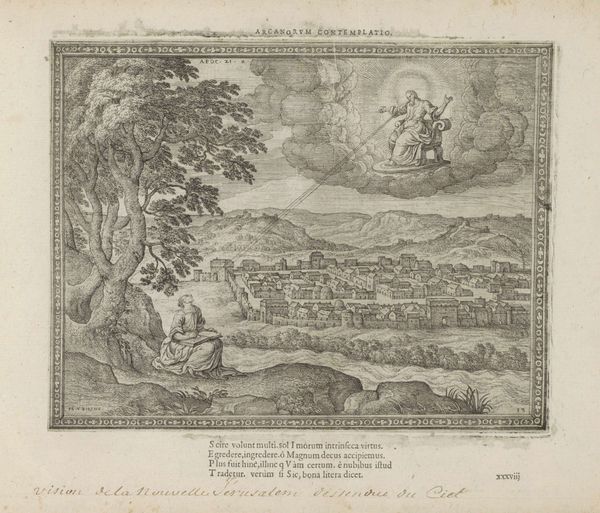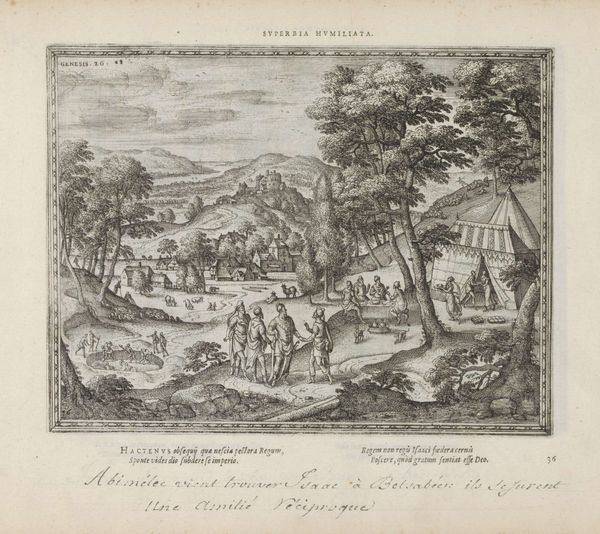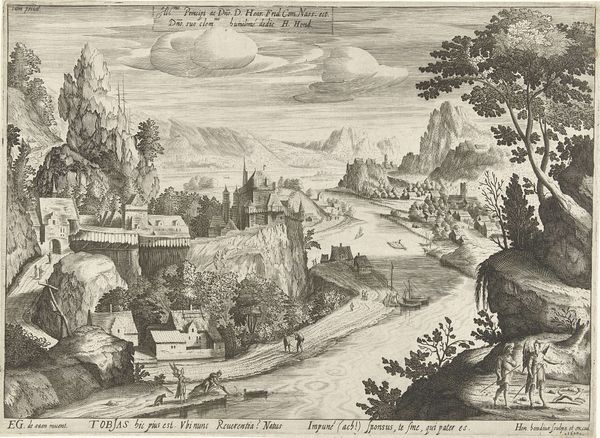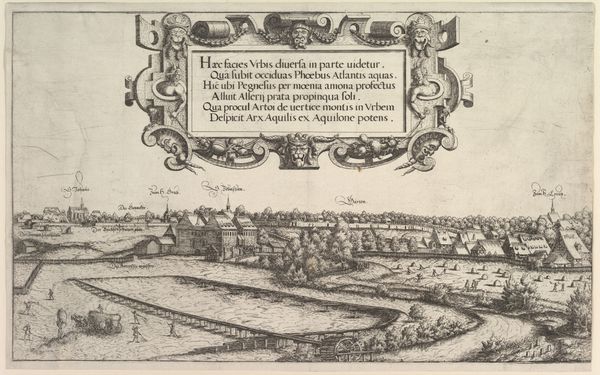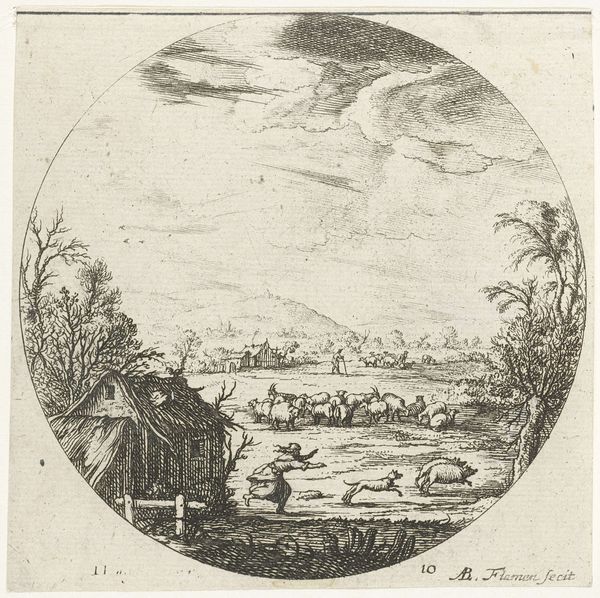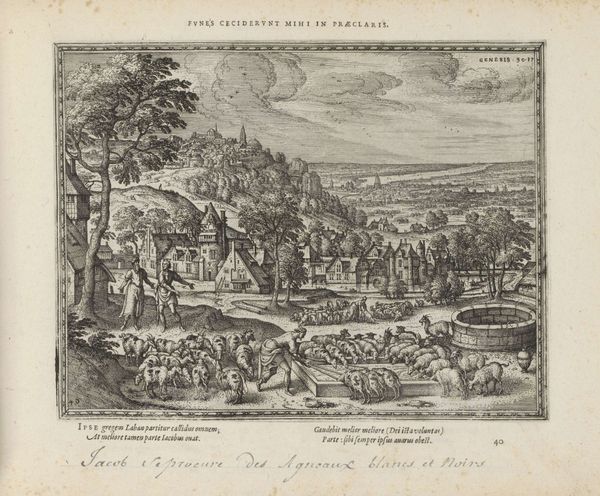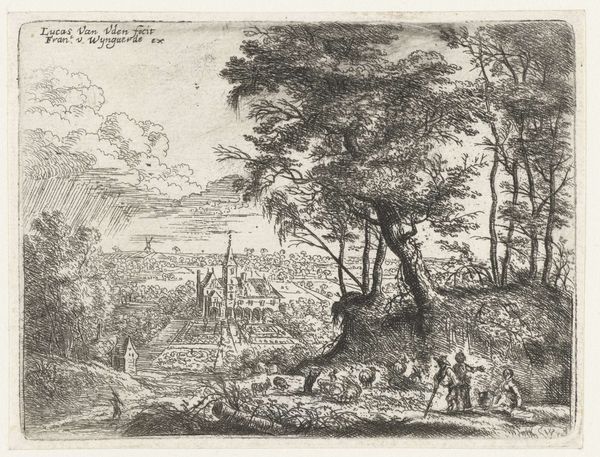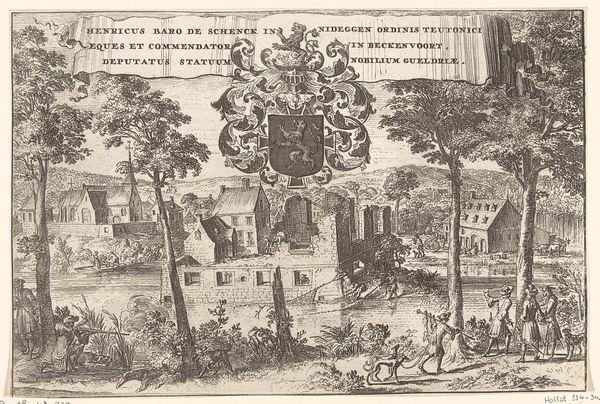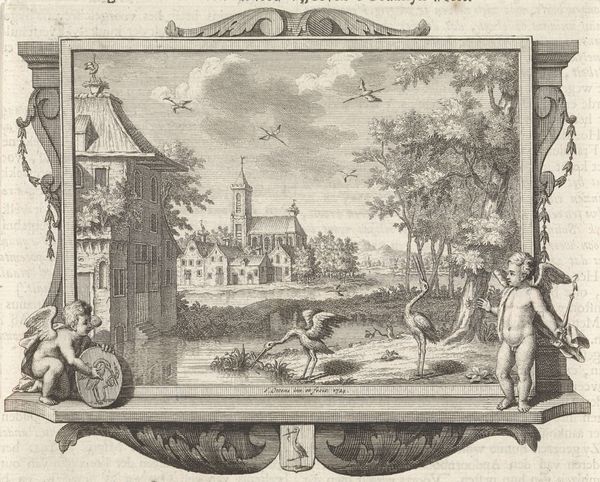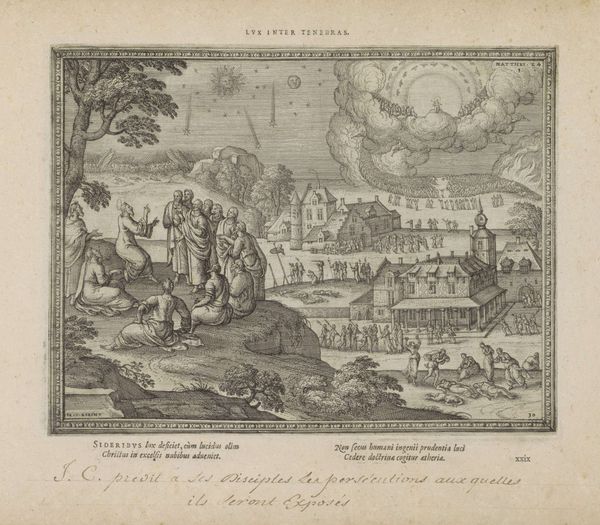
drawing, print, etching
#
drawing
#
baroque
#
dutch-golden-age
# print
#
etching
#
landscape
#
figuration
#
line
#
genre-painting
Dimensions: height 104 mm, width 103 mm
Copyright: Rijks Museum: Open Domain
Albert Flamen made this print, Tentenkamp, in Paris some time in the mid-17th century. He used etching, a technique that allowed for detailed lines and shading, to depict a bustling tent encampment. The image offers a glimpse into the social landscape of 17th-century France. The presence of the tents, the figures engaged in various activities, and the church tower in the background all invite us to consider the social conditions of the time. Was this a military camp, a gathering of traveling merchants, or something else entirely? The inscription in the upper portion of the image is an important part of the story: it tells us that the print was sold in Paris by a print seller named Gerard Jollain. The reference to the "privilege du Roy" or "King's privilege" suggests the existence of an early form of copyright protection. To understand the image better, we need to investigate the socio-economic and institutional histories that shaped its production and distribution. How did state patronage affect the print market? What were the social and economic dynamics of early printmaking in Paris?
Comments
No comments
Be the first to comment and join the conversation on the ultimate creative platform.
